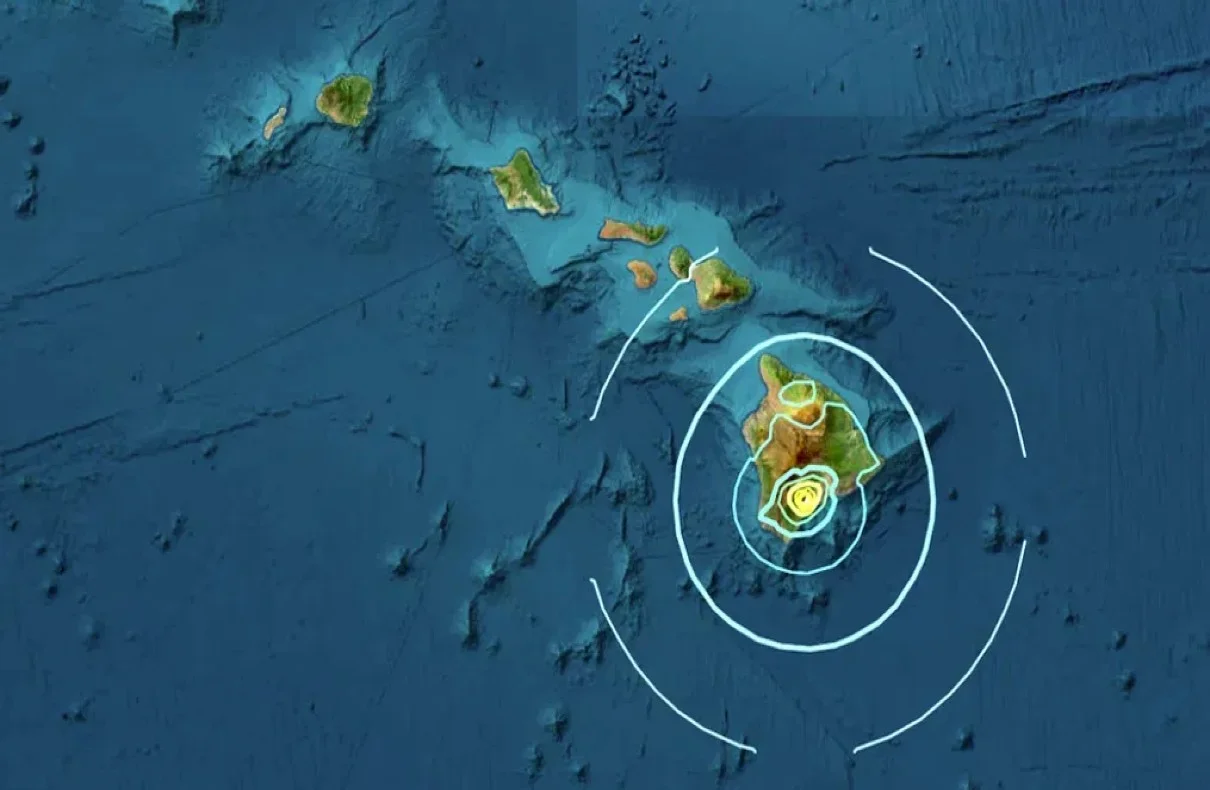
On February 9, 2024, a series of powerful earthquakes struck Hawaii’s Big Island and Southern California, causing widespread panic and disruption. The first earthquake, measuring a magnitude of 5.7, rattled the Big Island, followed by a magnitude 4.6 temblor in the Los Angeles area just a few hours later. The seismic activity sent shockwaves through the affected regions and prompted concerns about the potential for further damage. In this article, we will delve into the details of these earthquakes, their impact on the affected areas, and the response from local authorities.
The first earthquake struck the Big Island of Hawaii with a magnitude of 5.7. According to the U.S. Geological Survey (USGS), the earthquake occurred just after 10 a.m. local time, with the epicenter located approximately 1.5 miles southwest of Pahala. The quake had a depth of nearly 23 miles. Reports indicate that the earthquake was felt as far away as Oahu, near Honolulu.
Two Passengers Engage in Brutal Brawl on Southwest Flight
A couple of hours later, a magnitude 4.6 earthquake shook the Los Angeles area. The epicenter was located about 7.5 miles northwest of Malibu, according to the USGS. The quake occurred just before 2 p.m. local time at a depth of approximately 8.6 miles. Fortunately, there were no immediate reports of significant damage or injuries in the affected region.
While the earthquakes in Hawaii and Southern California caused alarm, the immediate impact on Hawaii’s Big Island was relatively minimal. Despite the strong shaking felt across the state, there were no immediate reports of major damage or injuries. Preliminary reports indicate that the earthquake in Hawaii was downgraded from a magnitude 6.3 to a magnitude 5.7. However, there were reports of items falling from shelves and pictures being thrown off walls. The earthquake also triggered a series of aftershocks in the Pahala area, further adding to the concerns of residents.
Local authorities and emergency services quickly mobilized in response to the earthquakes. The Hawaii Emergency Management Agency (HEMA) activated its emergency operations center to coordinate the response and provide assistance to affected communities. The Pacific Tsunami Warning Center confirmed that no tsunami was expected as a result of the earthquakes. Nevertheless, residents were advised to stay vigilant and prepared for any further seismic activity.
In Southern California, the earthquake caused some jitters among residents but did not result in significant damage or injuries. Local station FOX 11 reported no immediate reports of damage or injuries. However, the earthquake served as a reminder of the region’s vulnerability to seismic activity and the importance of preparedness.
Following the earthquake, local authorities in Southern California conducted assessments of critical infrastructure and buildings to ensure their structural integrity. The earthquake also prompted a reminder from officials for residents to review their emergency preparedness plans and ensure they have essential supplies on hand. The quick response and coordination of emergency services helped mitigate potential risks and reassure the affected communities.
The occurrence of these earthquakes serves as a stark reminder of the importance of earthquake preparedness. Living in seismically active regions like Hawaii and Southern California requires individuals and communities to be well-prepared for such events. Taking proactive measures and having a well-thought-out emergency plan can save lives and minimize damage during earthquakes.
Iceland’s Volcano Cataclysm Shakes the Earth
To prepare for earthquakes, it is crucial to create a comprehensive emergency plan for yourself and your family. This plan should include essential steps to take before, during, and after an earthquake. Some important elements to consider for your emergency plan are:
- Identify safe spaces: Identify the safest areas in your home or workplace where you can take cover during an earthquake. These areas should be away from windows, heavy furniture, and objects that may pose a risk of falling.
- Emergency supplies: Prepare an emergency kit that includes essential supplies such as water, non-perishable food, a first aid kit, flashlights, batteries, and a portable radio. Ensure that these supplies are easily accessible and regularly checked and replenished.
- Communication plan: Establish a communication plan with your family members or loved ones to ensure that everyone can stay connected during an earthquake or any other emergency. Designate a meeting point outside your home where you can reunite if you get separated.
- Educate yourself: Familiarize yourself with the specific earthquake risks and safety procedures in your area. Stay informed about local emergency alerts and warnings through reliable sources such as local news and official government channels.
In addition to having an emergency plan, it is important to be aware of and practice earthquake safety tips. Here are some key safety measures to keep in mind:
- Drop, Cover, and Hold On: During an earthquake, remember to drop to the ground, take cover under a sturdy piece of furniture, and hold on until the shaking stops. This action will help protect you from falling objects and minimize the risk of injury.
- Stay indoors: If you are indoors during an earthquake, stay inside and take cover. Avoid doorways and windows, as they may pose a higher risk of injury due to flying debris.
- Evacuate if necessary: If you are instructed to evacuate by local authorities, follow their guidelines and evacuate to designated safe areas. Be cautious of potential hazards such as downed power lines or damaged structures while evacuating.
- Secure heavy objects: Secure heavy furniture, appliances, and other objects that could potentially topple during an earthquake. Use straps, brackets, or other securing devices to prevent them from falling and causing injury.
- Prepare for aftershocks: After an earthquake, be prepared for aftershocks, which are smaller earthquakes that can occur following the initial tremor. Stay alert and continue to follow safety procedures until the situation stabilizes.
